From muscle in motion to exercise in ageing (w/ Video)
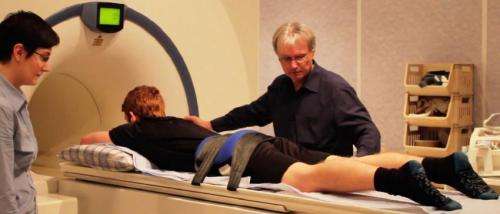
This summer will see elite athletes in action in events such as the Commonwealth Games and the football World Cup. Improving performance at the highest levels is a serious multi-million industry where the scientific study of exercise can turn the movements of also-rans into the motions of winners. But understanding the fundamental biomechanics and physiology of the human body can benefit millions of people, not just sports stars, as they age.
A major new BBSRC-funded study is now investigating the link between exercise tolerance and muscle metabolism. It's an area ripe for discovery and application, because the way we react to the stresses and strains of exercise is a strong predictor of mortality – better as measured by some studies than factors such as having been a smoker, having high blood pressure, being obese or diabetic, or having high cholesterol.
"It's connected to fitness in the broadest sense and about measuring mechanical function because the ability to move is so important," says co-lead on the project Professor Graham Kemp of the University of Liverpool. "You need to be able to get up out of a chair, get out of bed, under your own power. What most people would accept are important determinants of quality of life."
Split between the University of Liverpool and the University of Leeds, the study is using rarely attempted magnetic resonance spectroscopy techniques on volunteers as they undergo a battery of fitness tests. But it's not just young, fit and healthy superstars that are participating – alongside normal young individuals and elite athletes the over 65s will also be put through their paces to see how the mechanics of exercise tolerance changes with age.
The researchers hope that combining multiple physiological studies across the healthy population with a computational systems biology approach could lead to new ways to improve quality of life in ageing populations.
Not hitting the limits
Exercise intolerance is when a person is unable to do physical exercise to the expected level or duration for someone of a certain age or physical condition. A low tolerance for exercise contributes to a downward spiral of inactivity, which is debilitating in the elderly and an actual cause of many chronic diseases. Hence, cardiopulmonary exercise testing is used to measure and predict cardiovascular health and how the body transports and utilises oxygen.
As the UK's population ages, more and more people will become exercise intolerant: there will be 5.5M more elderly (over 65) people in 20 years' time and around 19 million by 2050.
"What we don't want to see in an ageing population is a decline in function, but to try and maintain that quality of life for as long as we can," says exercise physiologist Dr Carrie Fergusonwww.bbsrc.ac.uk/upload/structu … e/img/i-external.png who works on the project. "If we can find out the mechanisms that are limiting exercise tolerance as we age, we can gain more insight into how to address that issue."
So what causes people to be or become exercise intolerant? Oxygen (O2) transport from the atmosphere to the lungs, into blood, to the muscles, where is it used to make energy is one of the most consistent physiological processes allowing exercise to be sustained. However, how this is achieved in old and young, fit and unfit is still not completely understood.
In athletes and other endurance trained subjects oxygen use responds rapidly to exercise, but it is slow in the healthy elderly. And it's this slowness in using oxygen that places an increased reliance and strain on the body's limited reserves of readily-available stored energy. Using these contributes to shortness of breath, and the fatigue and pain that go with it, which causes the body to limit our exercise ability.
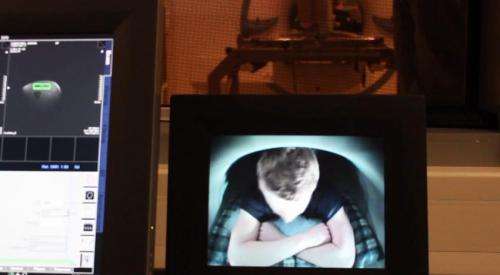
On your bike
The researchers at Leeds and Liverpool are therefore keen to develop a computational model to explain the dynamics of oxygen in the heart, blood and muscles. To do this, they have devised a series of dynamic exercise experiments spread across the Liverpool and Leeds university campuses that measure aspects of oxygen metabolism in muscle.
Their participants are all normally healthy individuals and are divided into three groups: under 30s; over 65s; and elite cyclists and triathletes. This way, researchers can collate data from across the healthy spectrum, and compare young versus old as well as young and athletic versus endurance trained athletes.
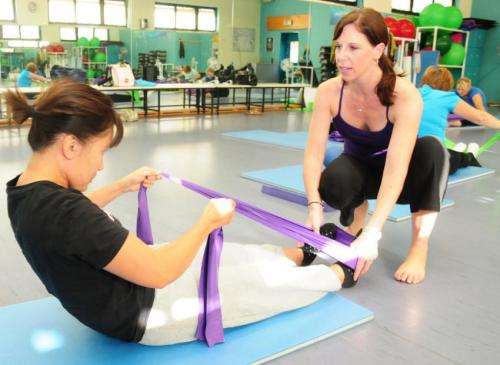
Some tests are relatively easy, and some are much more difficult and participants will struggle for a full 30-minute session," says Ferguson. "The data are already showing that for the same mechanical work, how you perform that work will influence how long you can perform it for." She says that's interesting in bioenergetic terms because you can see what's happening in the working muscles that allow people to continue under some conditions but not under others."
As seen in the video on this page, a key part of the experiments involves phosphorus magnetic resonance spectroscopy (see box: What's it like to exercise in an MRI scanner?). This is to find how phosphocreatine, an energy reserve in skeletal muscle that can be mobilized rapidly to cope with bursts of activity, is working in tandem with oxygen-fuelled metabolism.
"Our ultimate data are to find the capability of muscle to this type of work and recover from it," says Kemp. He says that crucial to this is a systems approach which recognises that muscle is at one end of a long chain, starting with atmospheric oxygen going into the lungs, which is then pumped by the heart before entering the muscles by blood vasculature. "So the computer modelling we do contains all of these so we can learn how these factors fit together quantitatively."
This requires experiments to be repeated across the Leeds and Liverpool sites using different techniques. Whilst Liverpool hosts the MRI scanner, the exercise physiology laboratory at Leeds has the gas exchange equipment.
The researchers are confident that despite the physical and logistical difficulties involved in recruiting and performing experiments across two sites, the broad data capture will overcome the 'signal-to-noise' problem and yield results for a fuller picture of what's happening in the muscle based on the fundamental bioscience of what we already know.
Early score
The experiments are yet to be completed but results are coming in. Combining breath-by-breath oxygen uptake measurements with magnetic resonance spectroscopy data, the researchers have found that during high-intensity exercise skeletal muscle becomes less efficient and it takes more energy to produce the same amount of power output. "In athletes, this process is closely associated with exercise performance," says Kemp.
"We have recently found the first in vivo evidence in young active subjects that this fatigue-associated reduction in work efficiency is associated with a reduction in the amount of energy that muscle mitochondria can produce per oxygen molecule consumed," Kemp explains from data that will be presented at the 2014 summer meeting of the Physiological Society UK (ref 4). Mitochondria are energy-producing organelles that live inside cells; this work adds to the increasing amount of research indicating the effective functioning of our cellular powerhouses is essential for healthy living.
The reasons for this link are still not entirely clear, but Kemp says it could be related to the capacity of mitochondria to use oxygen and dispose of fatty acids and glucose from the bloodstream. "Of all the tissue-organ systems in the body, skeletal muscle is perhaps most plastic in its ability to increase or decrease its content amount of mitochondria," he says.
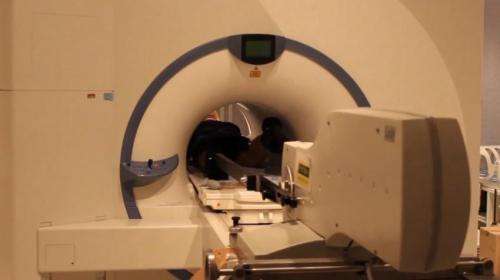
Preliminary data from another exercise test also shows that the predominant reason for fatigue during cycling, in both patients with chronic obstructive pulmonary disease and well-trained individuals, is the reduction in the ability to voluntarily activate their leg muscles, rather than the ability for the leg muscles to produce the required power. "In this sense elite athletes and patients could be thought of as experiencing similar limiting factors for exercise. This appears to be different to untrained individuals, in whom muscle fatigue appears a more important limiting mechanism," says Kemp. This preliminary work was presented at the Experimental Biology conference in April 2014.
More reps
The project has much work still to do. The team are in the process of recruiting healthy elderly participants for comparison tests, and are designing new testing procedures for athletes and patients.
There's a lot of interest in why some people show a larger response than others to a similar training stimulus. In fact, some individuals are exercise 'non-responders and just don't get any fitter with exercise: Dr Michael Mosley demonstrated he was one in a BBC Horizon documentary.
"Part of this is likely to be genetic differences between individuals. If we can understand these genetic differences, we may be able to design drugs or other therapies that would allow everyone to have a stronger response to exercise training and therefore greater health protection," says Dr Harry Rossiter from the University of Leeds who co-leads the project.
The hope is that studying the fundamental bioscience of how muscles utilise energy, combined with advances in genetic sequencing, will bring about exercise regimes perhaps combined with pharmaceutical adjuvants tailored to an individual's genetic profile, contributing to the maintenance of health, quality of life, and longevity.
Rossiter adds that such personalised medicine for exercise training is an aim for the future. "But there are studies underway in clinical rehabilitation to identify methods for personalising training adaptations to maximize benefit."
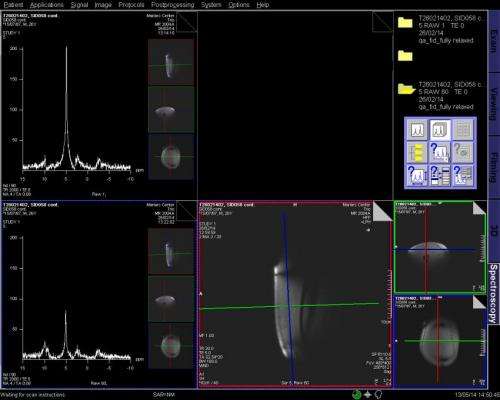
What's it like to exercise in an MRI scanner?
Matt Davies, an MSc student at the University of Leeds, explains what it's like to complete physically demanding exercises in a confined space. So far more than 80 hours of testing in this condition have been recorded.
"To come as a participant I find really interesting. It's more fun than anything and you get used to it. The participants so far for the under 30s group are mainly sport science students and most people are ok with the exercise.
It is a very novel movement you're not going to have done anything like it before. So the first few tests are about familiarisation and getting comfortable. That's why we do multiple versions of each test.
In your cardiovascular system you feel alright; your heartbeat is slightly raised, but because the leg work is isolated in your quads you do feel it towards the end. The encouragement called out really does help you get through to the end for sure."


















